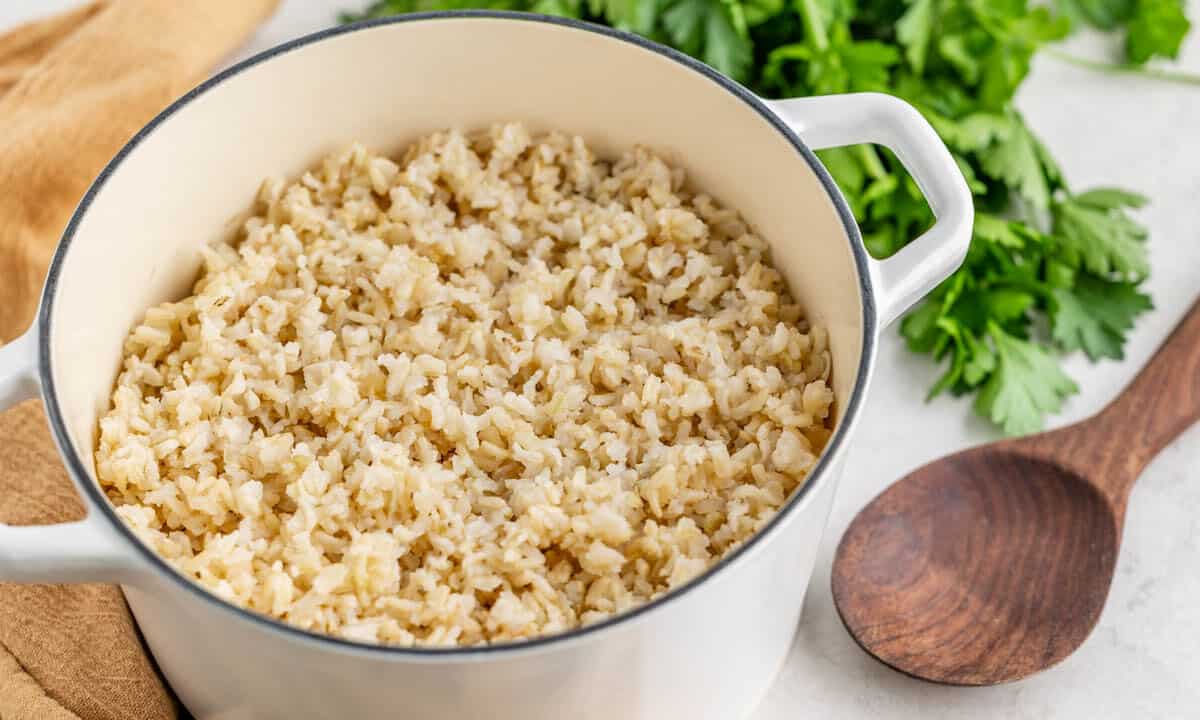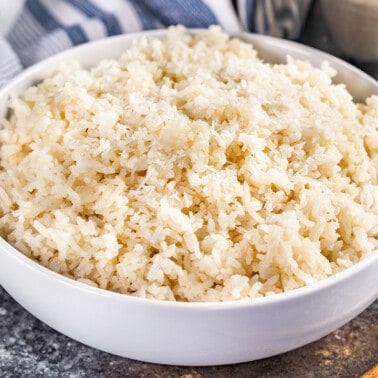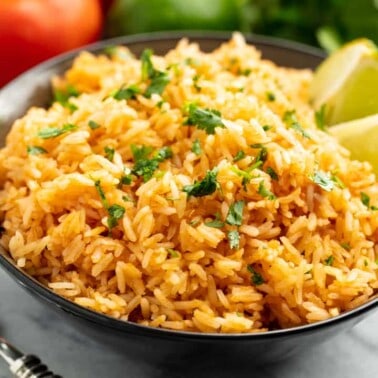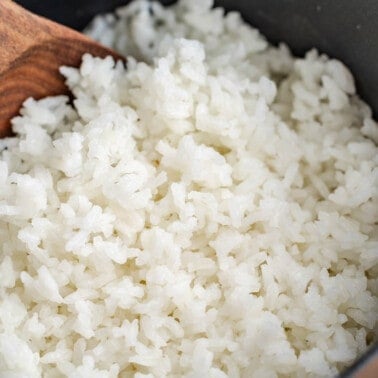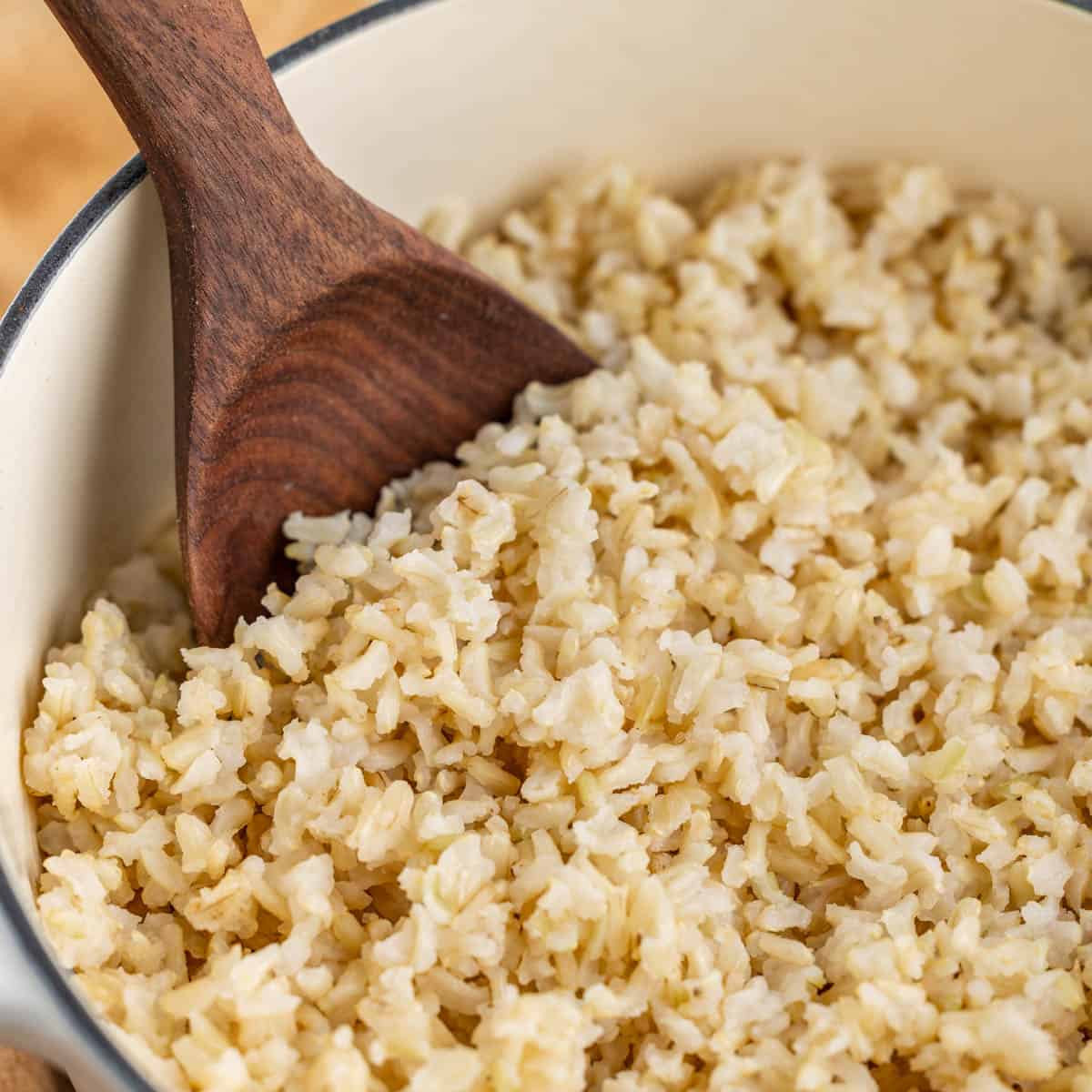Brown rice is not just a dish; it’s an experience. It’s about the warmth and aroma filling your kitchen, the anticipation of a meal that’s both nutritious and delicious. This simple, unassuming grain brings a rustic, earthy flavor to your table, making it a versatile base for a variety of dishes. Whether you’re pairing it with a hearty stew or a light salad, brown rice holds its own. Its preparation, a blend of simmering and resting, is a gentle reminder of the beauty in simplicity. As you fluff the cooked grains and see the steam rise, you realize that brown rice is more than food – it’s a moment of tranquility in your day.
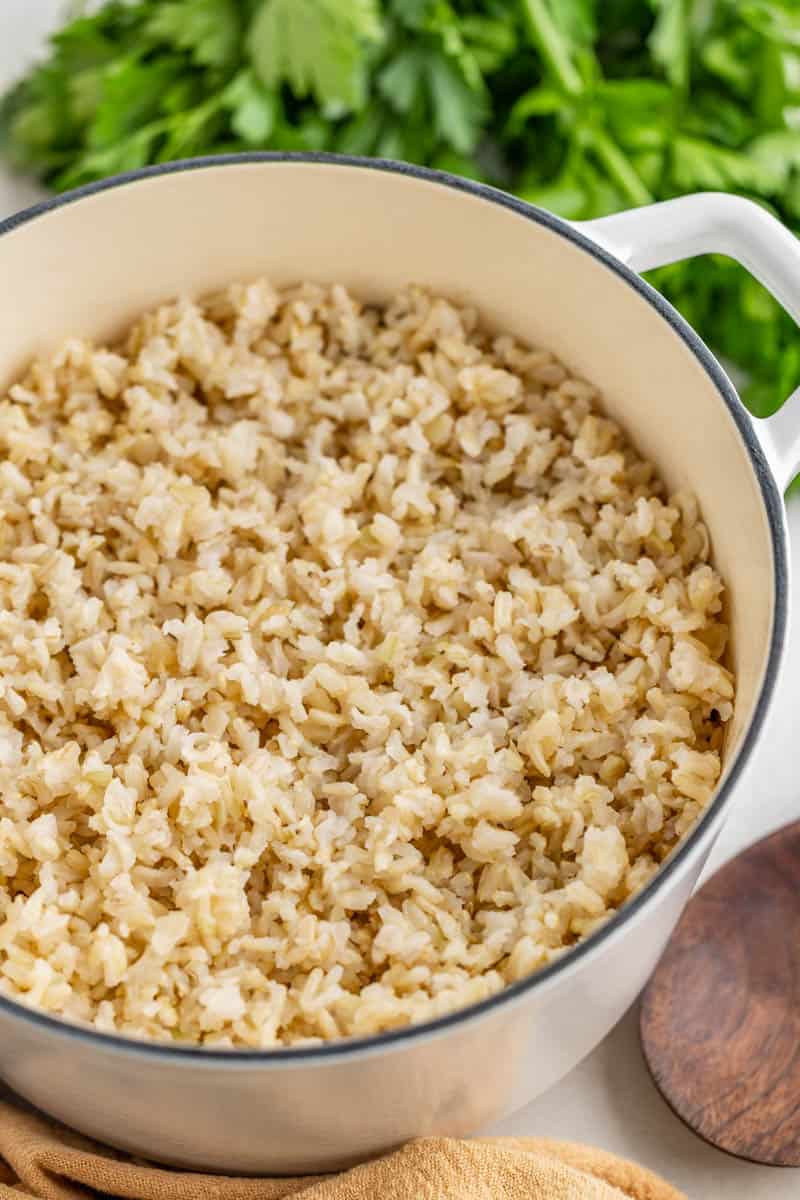
Ingredient Breakdown & Substitutions
- Brown Rice: The star of the dish, choose a high-quality variety. For a different texture, try short-grain or long-grain.
- Water: Can be substituted with vegetable or chicken broth for more flavor.
- Butter: Adds richness. Can be replaced with olive oil for a plant-based option.
- Salt: Enhances the rice’s natural flavor. Adjust according to taste or dietary needs.
Frequently Asked Questions
If your brown rice is turning out mushy, it may be due to too much water or overcooking. Make sure to follow the water-to-rice ratio in the recipe, and check the rice towards the end of the cooking time to prevent overcooking.
You can infuse more flavor into your brown rice by cooking it in a broth instead of water or by adding herbs and spices. Some popular choices are garlic, onion, cumin, and turmeric.
The primary difference between brown and white rice is that brown rice retains its outer layers—the bran and germ—which are removed in white rice. These layers give brown rice its characteristic nutty flavor and chewy texture. They also make it more nutritious than white rice.
Absolutely! Use the same water-to-rice ratio, but check your rice cooker’s manual for specific settings as cooking times may vary.
Yes, brown rice is naturally gluten-free, making it a great choice for those with gluten intolerance or celiac disease. However, always check the packaging in case it’s processed in a facility that also processes gluten-containing grains.
Cooked brown rice can be stored in an airtight container in the refrigerator for up to 5 days. Make sure to cool it completely before storing to prevent bacterial growth.
Types of Brown Rice
Long Grain Brown Rice: Perfect for recipes that require separate grains, such as stir-fries, pilafs, or as a side. Use a 2.5:1 water-to-rice ratio, and cook for 40-45 minutes.
- Brown Basmati Rice: Ideal for dishes like biryani or pilaf, with a nutty flavor and aroma. Rinse before cooking, use a 2.5:1 water-to-rice ratio, and cook for around 40-45 minutes.
- Brown Jasmine Rice: Fragrant with a slightly chewy texture, great for Southeast Asian dishes. Use a 2:1 water-to-rice ratio, and cook for 35-40 minutes.
Medium Grain Brown Rice: Offers a balance between stickiness and fluffiness. Versatile for dishes like rice salads, soups, and casseroles. Use a 2.5:1 water-to-rice ratio, and cook for around 45-50 minutes.
- Brown Calrose Rice: Slightly sticky when cooked, good for dishes like sushi or stir-fries. Use a 2:1 water-to-rice ratio, and cook for about 40 minutes.
Short Grain Brown Rice: Yields sticky rice when cooked, with plump grains ideal for dishes like risotto or rice pudding. Use a 2:1 water to rice ratio, and cook for around 50 minutes.
- Sweet Brown Rice (Brown Glutinous Rice): Sticky, glue-like texture when cooked, great for sushi, rice cakes, or dishes needing a more solid rice base. Use a 2:1 water-to-rice ratio, and cook for about 50 minutes.
Black Rice: Also known as forbidden rice, it turns a deep purple when cooked and has a nutty flavor and firm texture. It’s great for salads, bowls, or as a colorful side dish. Rinse before cooking, use a 2:1 water to rice ratio, and cook for 30-35 minutes.
Wild Rice: Technically a grass, not a rice, but cooked and used similarly. It has a chewy outer sheath and a tender inner grain with a nutty flavor. Perfect for salads, soups, or stuffing. Rinse before cooking, use a 3:1 water-to-rice ratio, and cook for 45-50 minutes.
Remember, the cooking times and water-to-rice ratios can vary depending on the specific brand and your personal preference, so it’s always a good idea to check the package instructions.
Troubleshooting
- Rice too sticky? Reduce the water slightly next time.
- Rice undercooked? Add a bit more water and extend the cooking time.
- Rice overcooked? Use less water and check the rice a few minutes earlier.
Essential Tips and Tricks
- Rinse Your Rice: It’s generally a good idea to rinse brown rice under cold water before cooking to remove any dust or debris and reduce surface starch which can cause clumping.
- Soak the Rice: Brown rice benefits from soaking for at least 30 minutes before cooking. Soaking helps to soften the tough outer bran layer and reduce the overall cooking time.
- Use the Right Ratio of Water to Rice: The typical ratio for brown rice is 2.5:1, that is 2.5 cups of water for every 1 cup of rice. However, this may vary based on the specific type of rice and your personal preference, so always check the packaging.
- Choose the Right Pot: Use a pot that is large enough to accommodate the cooked rice, as rice can double or triple in volume as it cooks. The pot should also have a tight-fitting lid to prevent steam from escaping.
- Cook It Slowly: Brown rice takes longer to cook than white rice due to the outer bran layer. Slow cooking on low heat helps ensure that the rice cooks evenly and the grains are soft all the way through.
- Let It Rest: After the rice has finished cooking, let it sit covered for at least 10 minutes before fluffing. This rest period allows the moisture to distribute evenly throughout the pot, leading to more consistent and fluffy rice.
- Fluff the Rice: Use a fork to fluff the rice after it has rested. Fluffing helps to separate the grains and makes for a better texture.
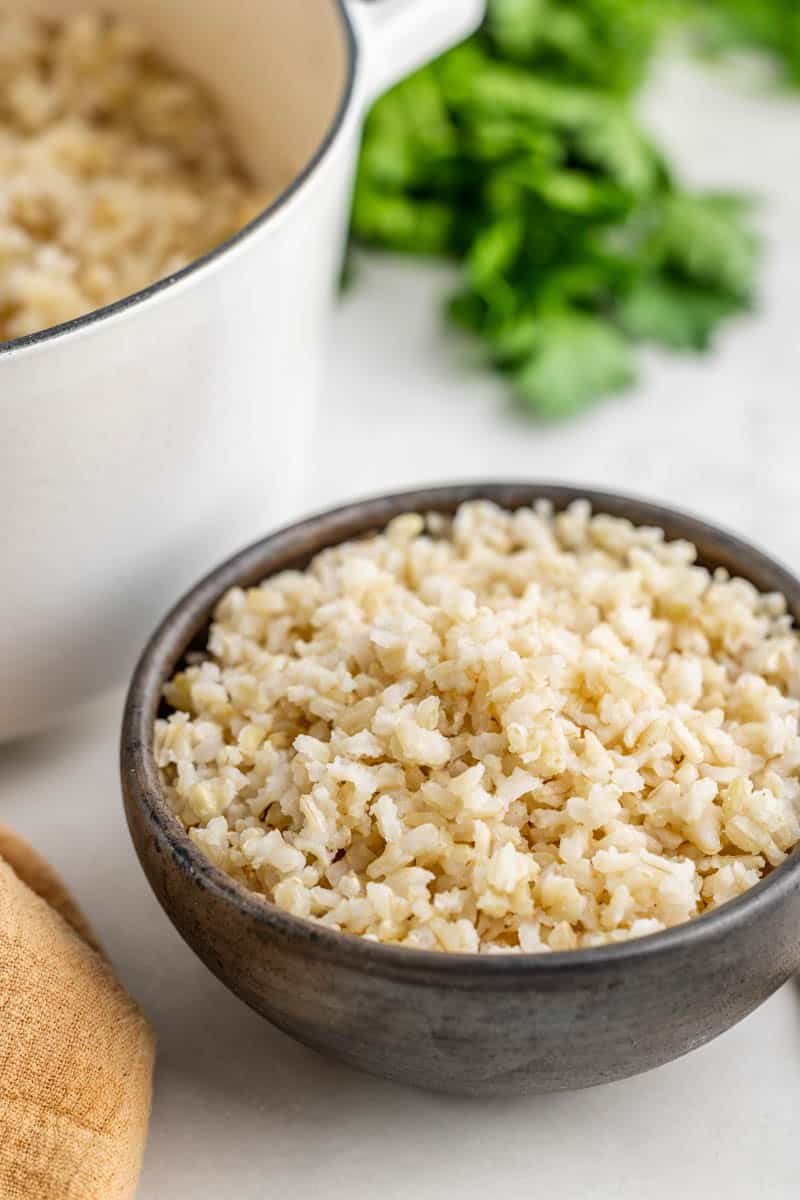
Storage & Reheating Instructions
Store any leftover rice in an airtight container in the refrigerator for up to 5 days. To reheat, add a splash of water to the rice and warm it in a microwave or on the stovetop, ensuring it’s heated all the way through before serving.
More Rice Side Dish Recipes
Easy Cheesy Rice Pilaf
20 mins
Easy Coconut Rice
20 mins
Authentic Mexican Rice
30 mins
How to Make White Rice
25 mins

